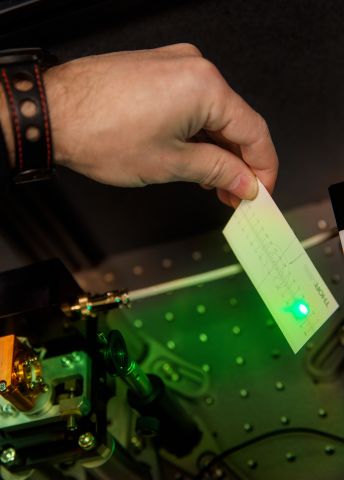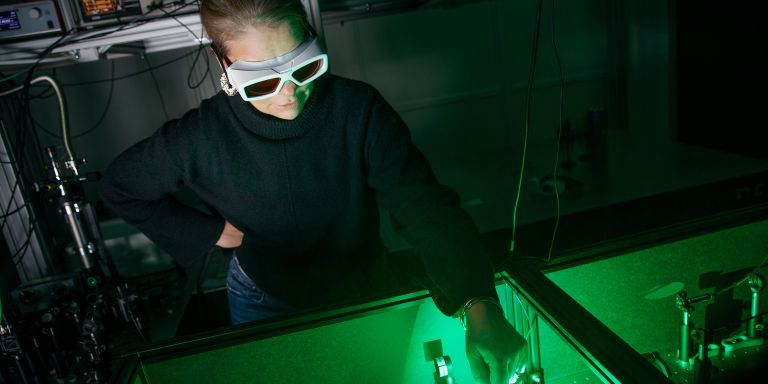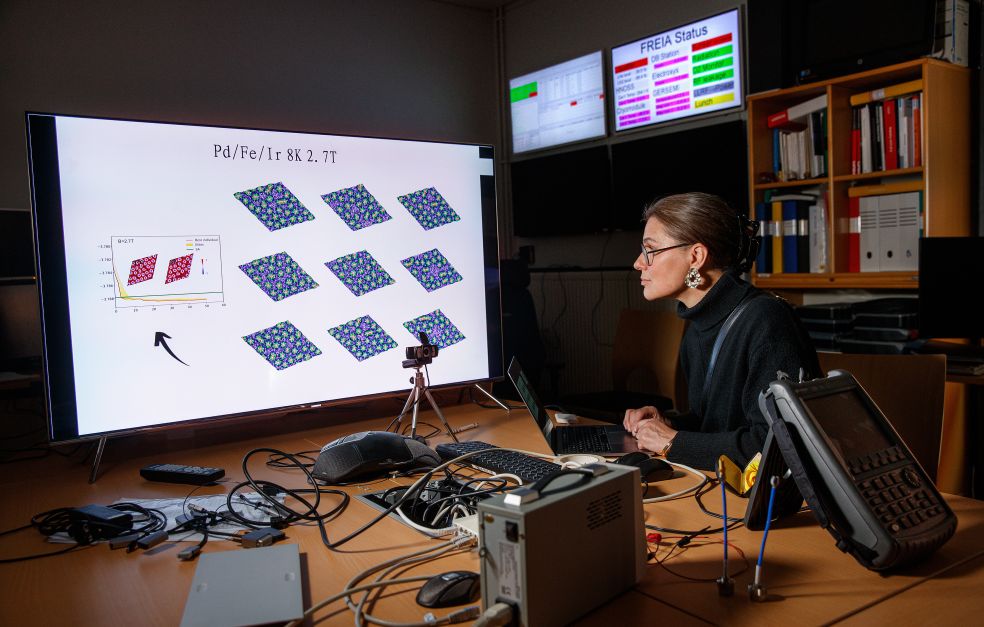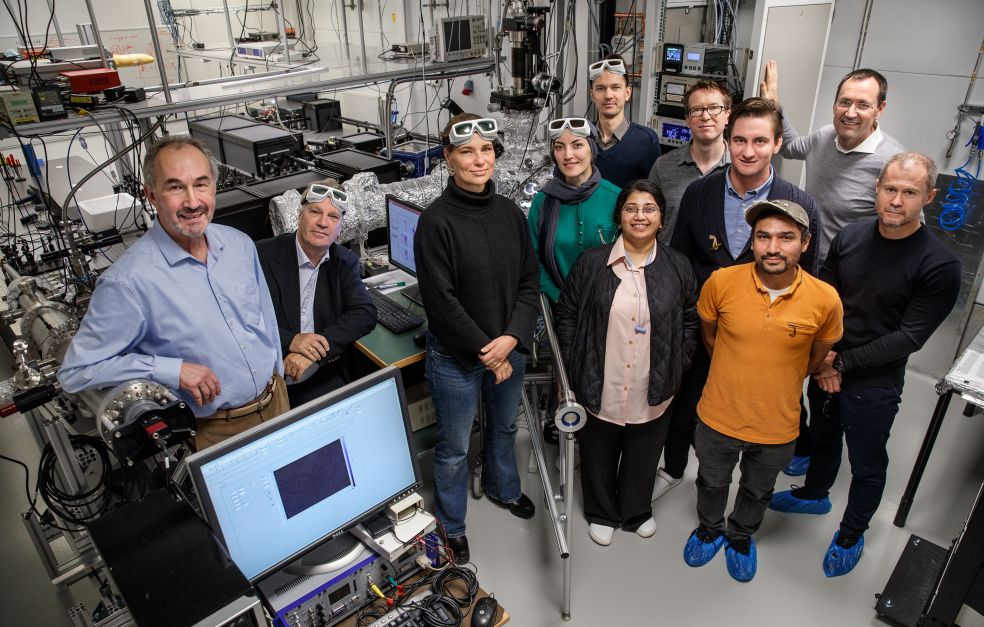
Project Grant 2022
Light-matter interaction in the ultrafast regime
Principal investigator:
Anna Delin, Professor of Computational Nanomagnetism
Co-investigators:
Uppsala University
Hermann Dürr
Olle Eriksson
Olof Karis
Institution:
KTH Royal Institute of Technology
Grant in SEK:
SEK 21.2 million over five years
Interesting things can happen when laser light strikes a material. If the laser is too strong, the material will melt or vaporize. But correctly designed pulses of laser light can instead alter a material’s properties – a non-magnetic material may become magnetic; a semiconductor can become a metal, and it may also be possible to create superconductors – materials that conduct electric current with no resistance.
Researchers at KTH Royal Institute of Technology and Uppsala University are studying this transformation in a project funded by Knut and Alice Wallenberg Foundation.
“We’re trying to understand what happens when pulses of strong laser light penetrate a material. Why are the materials altered and how does it happen?” asks Anna Delin, Professor of Computational Nanomagnetism at KTH, who has overall responsibility for the project.
Data storage in magnetic swirls
Delin draws atoms as dots and magnetic fields as arrows on a white board. We are sitting in the break room at the Freia Laboratory, Uppsala University. Delin has traveled here to meet up with her fellow researchers on the project. She uses the white board to explain the phenomena the team will be investigating.
It is a question of magnetism, but not the kind you find in fridge magnets. The states being researched can best be described as patterns of swirling magnetism, possessing physical properties that give cause for optimism.
“It’s possible to store information in these magnetic swirls. They’re stable and can be controlled using minute additional currents, which makes them attractive as the basis for extremely energy-efficient information technology in the future,” Delin explains.
But although there are promising applications for several of the phenomena being examined by the researchers, the project is really about pure scientific research.
“We’re trying to understand these phenomena. An in-depth understanding of something often yields benefits, sooner or later, however abstract it may be while research is in progress.”
Ultrafast laser
“Beam off" says the sign on the door to the laser room at the Freia Laboratory, where the researchers on the team have gathered. The changes they are investigating, which occur in materials exposed to laser beams, take place at a scale of femtoseconds, which is very fast indeed. A femtosecond is to a second what a second is to about 32 million years.
The project is therefore heavily reliant on the progress made in laser technology over the past few recent decades, which has made it possible to create ultra-short laser pulses and maintain tight control over the properties of laser light.
“We’re going to see what happens when different materials are exposed to laser beams at different energy levels, different pulse lengths and different frequencies. We can also bombard materials with light pulses transmitted at given intervals, resulting in interesting states that endure over time,” Delin says.
The researchers are using two experimental configurations of ultrafast lasers. The one in the Freia lab is intended to create laser light with highly defined energy, so the scientists can study the extent to which small energy differences impact changes in the materials. In the other lab – Helios – a slightly higher energy laser is being used to study how the changes evolve over time.
Supercomputers needed
The project combines the expertise of experimental and theoretical researchers. The theoretical research aims to describe physical systems using equations based on quantum mechanics, and solve them with the help of supercomputers. The equations cannot be solved precisely – it is a question of arriving at approximations.
“We’re trying to make better approximations and thereby more accurate computations. Time dependency – how things change over time – is important, and requires a lot of computer power. It’s only fairly recently that we’ve been able to do it well enough using anything other than very simple model systems,” Delin explains.
Delin and her co-investigator Olle Eriksson are theoreticians, whereas Hermann Dürr and Olof Karis are experimental laser researchers. The collaboration between experiments and theory creates synergies in both directions. The experimental researchers can obtain measurement results that the theoreticians then attempt to understand and describe using quantum mechanical models. Alternatively, computations can form the basis for experiments. Delin elaborates:
“We can compute systems that don’t exist and identify interesting properties in a given material. We can then predict materials that it ought to be possible to fabricate, so the experimentalists can study them further.”
The materials being studied often contain transition metals, i.e. elements in the middle of the periodic table, such as nickel, iron and cobalt, and are often oxides of these metals.
The project spans five years to start with. During that time the team will be contributing new knowledge about how and when laser-driven states are created.
“Our goal is to learn how to control the formation of these states, so we can create new, tailored states of matter on request,” Delin says.
Text Sara Nilsson
Translation Maxwell Arding
Photo Magnus Bergström





